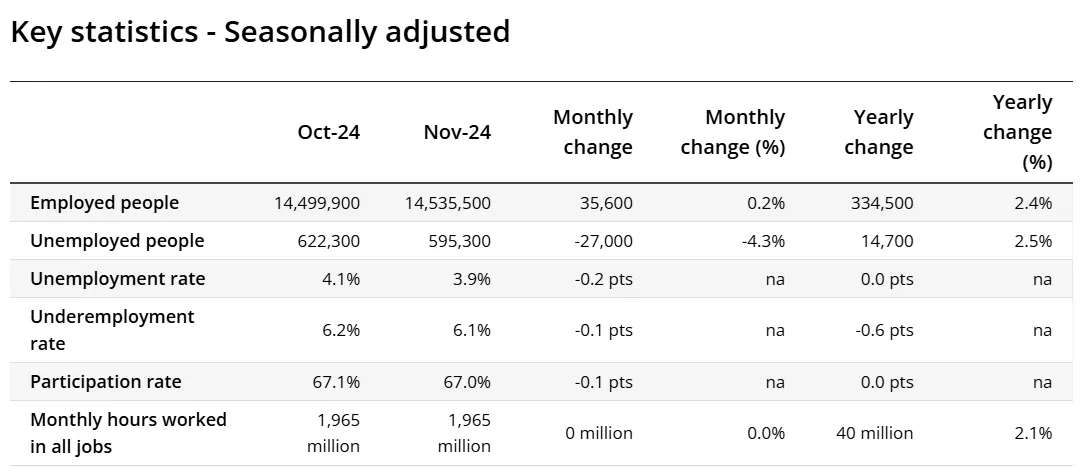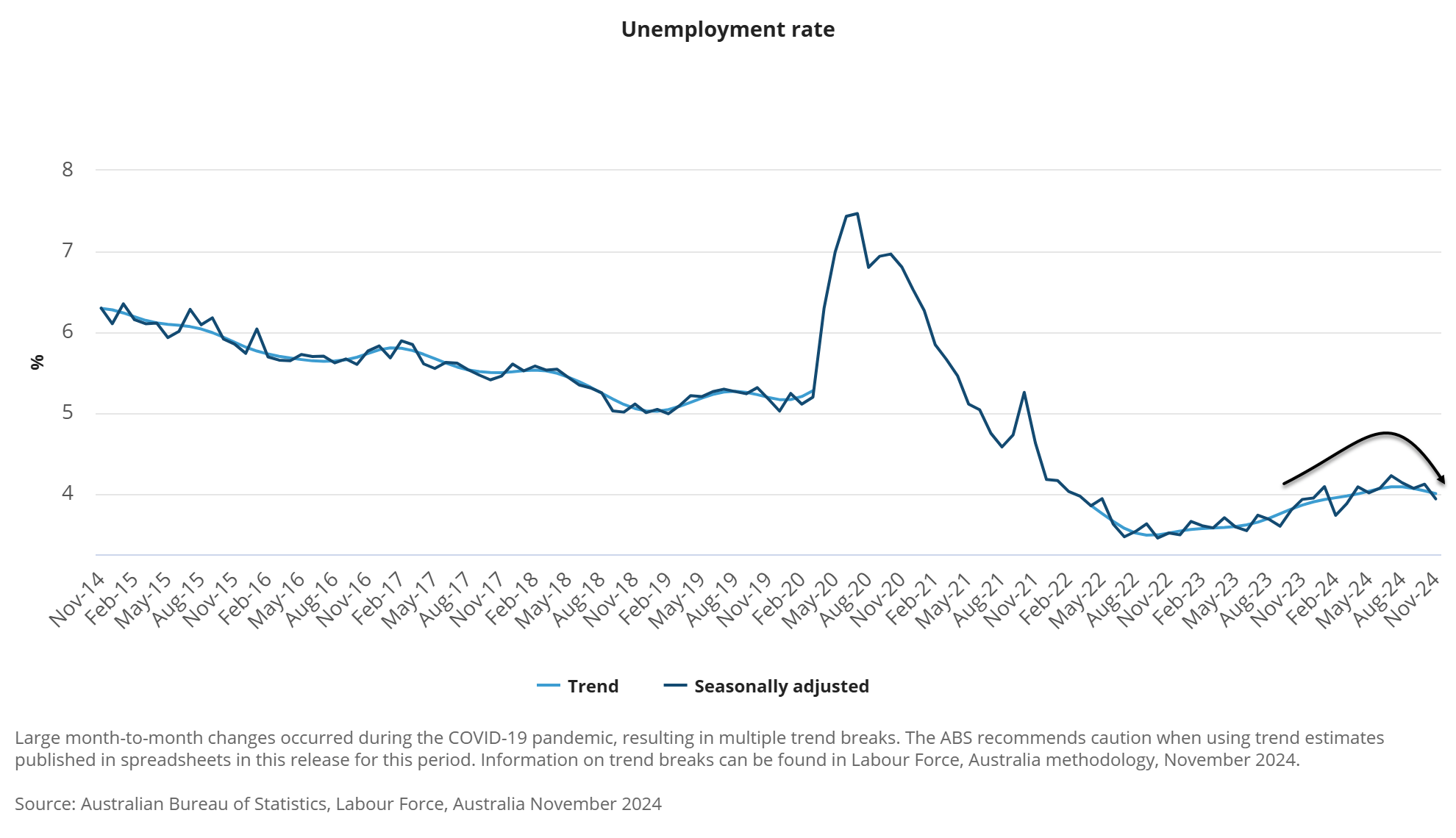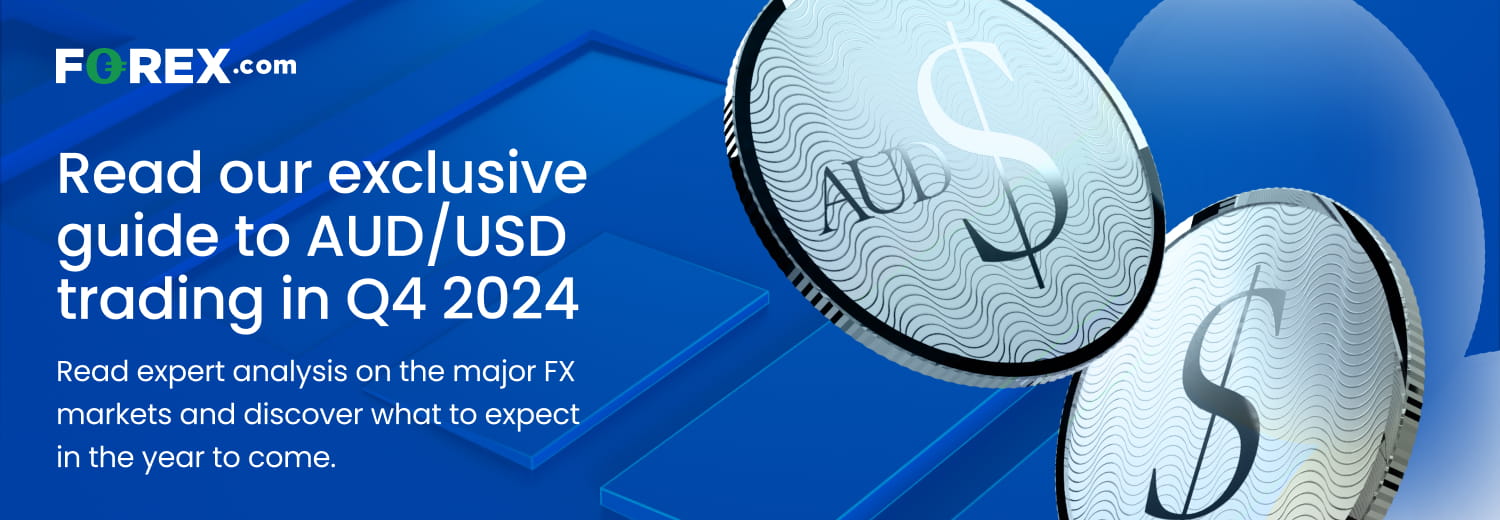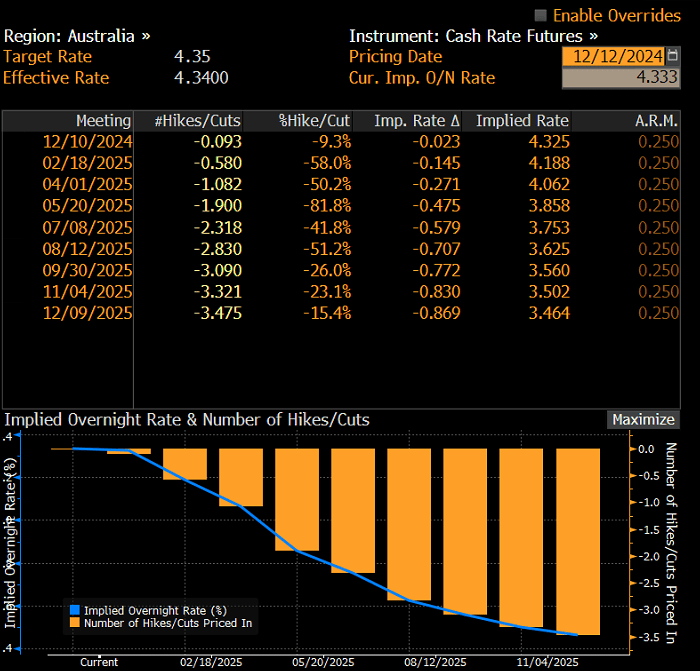- Australian unemployment declines to 3.9%
- Cyclical areas of labour market hint unemployment has peaked
- February RBA rate cut back to a coin toss
- AUD/USD price action, momentum turning more positive
Overview
Australian unemployment may have peaked, casting doubt on the need for the RBA to cut interest rates anytime soon, especially with underlying inflation still well above its target. The Australian dollar is flying in the wake of the November employment report as traders pare expectations on the probability of a rate cut in February.
Dovish RBA bets take a beating

Source: ABS
Unemployment declined unexpectedly to 3.9%, down sharply from 4.1% in October. Markets were looking for an increase to 4.2%. Reserve Bank forecasts are based on unemployment averaging 4.3% in the December quarter, requiring an abrupt weakening in the labour market to be realised. That looks extremely unlikely.
Employment growth smashed forecasts, lifting 35,600 compared to 25,000 expected. The full-time workforce swelled by 52,6000. The percentage of the working age population in employment ticked up to 64.4%, equalling the record set two months earlier.
Participation declined marginally from record levels, contributing to the downside surprise in the unemployment rate. Total hours worked were also unchanged, so it was not an uniformly strong report.

Source: ABS

Unemployment may have peaked
Casting doubt on the need for the RBA to cut rates in the coming months, parts of the labour market with greater sensitivity to the economic cycle strengthened, hinting the peak for unemployment may have been seen.
Underutlilidsation – which historically has a strong inverse relationship to wage pressures – decline three tenths to 10%, the lowest level since May 2023 and down eight tenths from the highs. It measures unemployed and underemployed workers as a percentage of the workforce.
Underemployment declined a tenth to 6.1%, the lowest since April 2023. Unemployment among 15 to 24-year-olds slipped to 8.8%, down from 9.1% and more than a full percentage point below the recent high.
Those readings will undoubtedly catch the attention of the RBA who have publicly stated it is monitoring these areas for signs of a turning point in the labour market. Right now, they suggest unemployment has peaked, increasing the risk of wage pressures returning, potentially making the task of bringing underlying inflation down to the 2.5% midpoint of its target more difficult.
Those hounding the RBA to cut rates will argue to they’re blue in the face that the level where unemployment generates wages pressures is far lower than in the past, but it’s simply too early to say that with any authority. Wage and inflationary pressures may be easing now, but forward labour market indicators such as job ads and openings remain well above pre-pandemic levels. The labour market is still incredibly tight.
RBA rate cut returns to coin toss

Source: Bloomberg
Having been deemed a 75% probability before the data, swaps traders have been forced to unwind dovish bets around the RBA’s February meeting, putting the probability of a 25bps cut around 58%. That seems too high considering how strong the labour market remains relative to RBA forecasts. Just under 3.5 cuts remain priced by the end of next year, near unchanged from before the data was released.
AUD/USD putting in a bottom?

Source: TradingView
AUD/USD surged on the jobs report, extending the rebound following what looks to be a false downside break of long-running uptrend support on Wednesday. As things stand on the daily timeframe, the three-candle sequence will deliver a morning star if the Aussie finishes near these levels, a pattern often seen at market bottoms. With RSI (14) diverging from price, it bolsters the case for near-term upside even with MACD yet to confirm the bullish momentum signal.
For those considering AUD/USD setups, resistance may be located above .6455 and .6546 with support just beneath .6400 and .6350.
-- Written by David Scutt
Follow David on Twitter @scutty